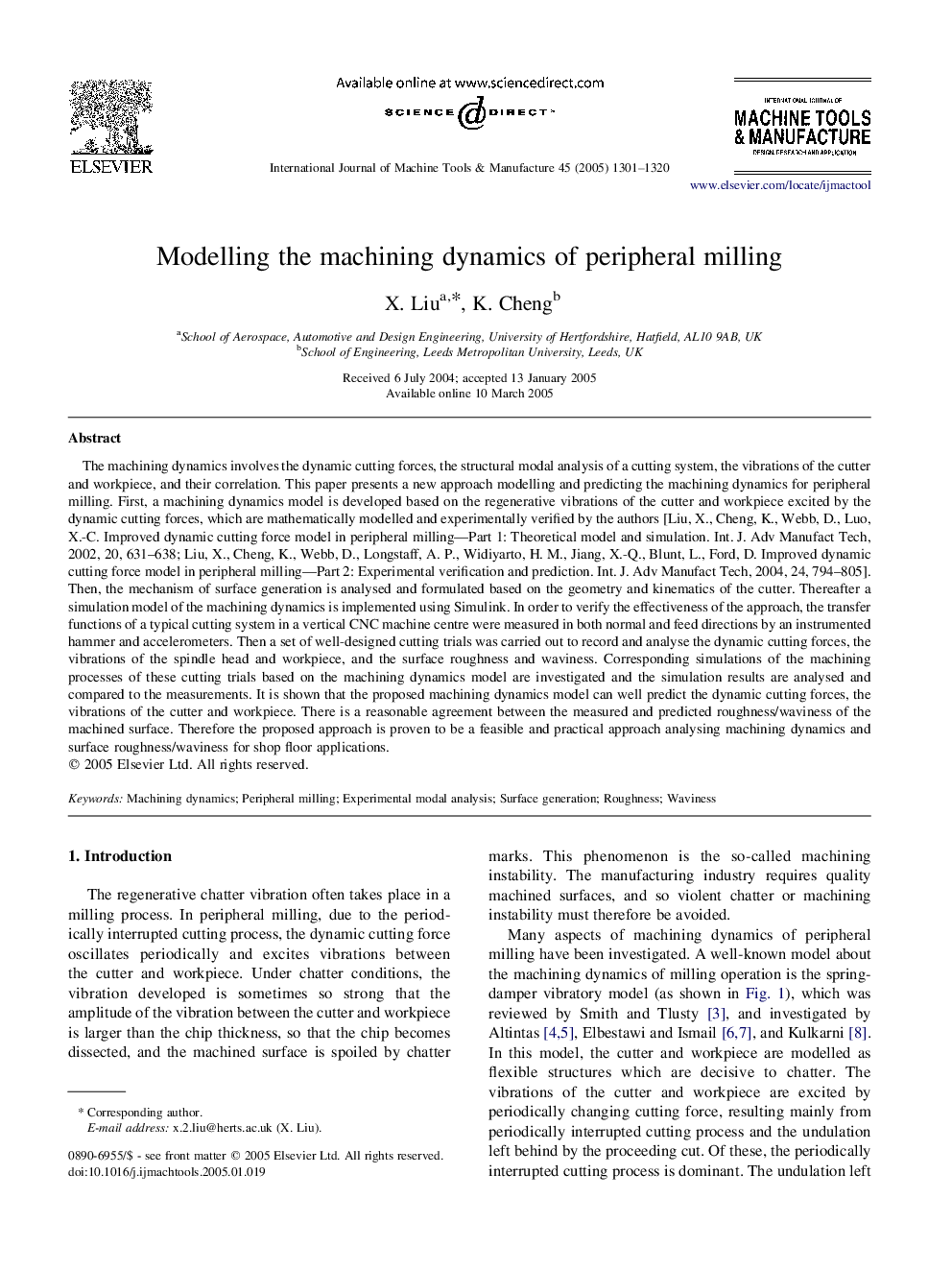| کد مقاله | کد نشریه | سال انتشار | مقاله انگلیسی | نسخه تمام متن |
|---|---|---|---|---|
| 9705299 | 1464612 | 2005 | 20 صفحه PDF | دانلود رایگان |
عنوان انگلیسی مقاله ISI
Modelling the machining dynamics of peripheral milling
دانلود مقاله + سفارش ترجمه
دانلود مقاله ISI انگلیسی
رایگان برای ایرانیان
کلمات کلیدی
موضوعات مرتبط
مهندسی و علوم پایه
سایر رشته های مهندسی
مهندسی صنعتی و تولید
پیش نمایش صفحه اول مقاله

چکیده انگلیسی
The machining dynamics involves the dynamic cutting forces, the structural modal analysis of a cutting system, the vibrations of the cutter and workpiece, and their correlation. This paper presents a new approach modelling and predicting the machining dynamics for peripheral milling. First, a machining dynamics model is developed based on the regenerative vibrations of the cutter and workpiece excited by the dynamic cutting forces, which are mathematically modelled and experimentally verified by the authors [Liu, X., Cheng, K., Webb, D., Luo, X.-C. Improved dynamic cutting force model in peripheral milling-Part 1: Theoretical model and simulation. Int. J. Adv Manufact Tech, 2002, 20, 631-638; Liu, X., Cheng, K., Webb, D., Longstaff, A. P., Widiyarto, H. M., Jiang, X.-Q., Blunt, L., Ford, D. Improved dynamic cutting force model in peripheral milling-Part 2: Experimental verification and prediction. Int. J. Adv Manufact Tech, 2004, 24, 794-805]. Then, the mechanism of surface generation is analysed and formulated based on the geometry and kinematics of the cutter. Thereafter a simulation model of the machining dynamics is implemented using Simulink. In order to verify the effectiveness of the approach, the transfer functions of a typical cutting system in a vertical CNC machine centre were measured in both normal and feed directions by an instrumented hammer and accelerometers. Then a set of well-designed cutting trials was carried out to record and analyse the dynamic cutting forces, the vibrations of the spindle head and workpiece, and the surface roughness and waviness. Corresponding simulations of the machining processes of these cutting trials based on the machining dynamics model are investigated and the simulation results are analysed and compared to the measurements. It is shown that the proposed machining dynamics model can well predict the dynamic cutting forces, the vibrations of the cutter and workpiece. There is a reasonable agreement between the measured and predicted roughness/waviness of the machined surface. Therefore the proposed approach is proven to be a feasible and practical approach analysing machining dynamics and surface roughness/waviness for shop floor applications.
ناشر
Database: Elsevier - ScienceDirect (ساینس دایرکت)
Journal: International Journal of Machine Tools and Manufacture - Volume 45, Issue 11, September 2005, Pages 1301-1320
Journal: International Journal of Machine Tools and Manufacture - Volume 45, Issue 11, September 2005, Pages 1301-1320
نویسندگان
X. Liu, K. Cheng,